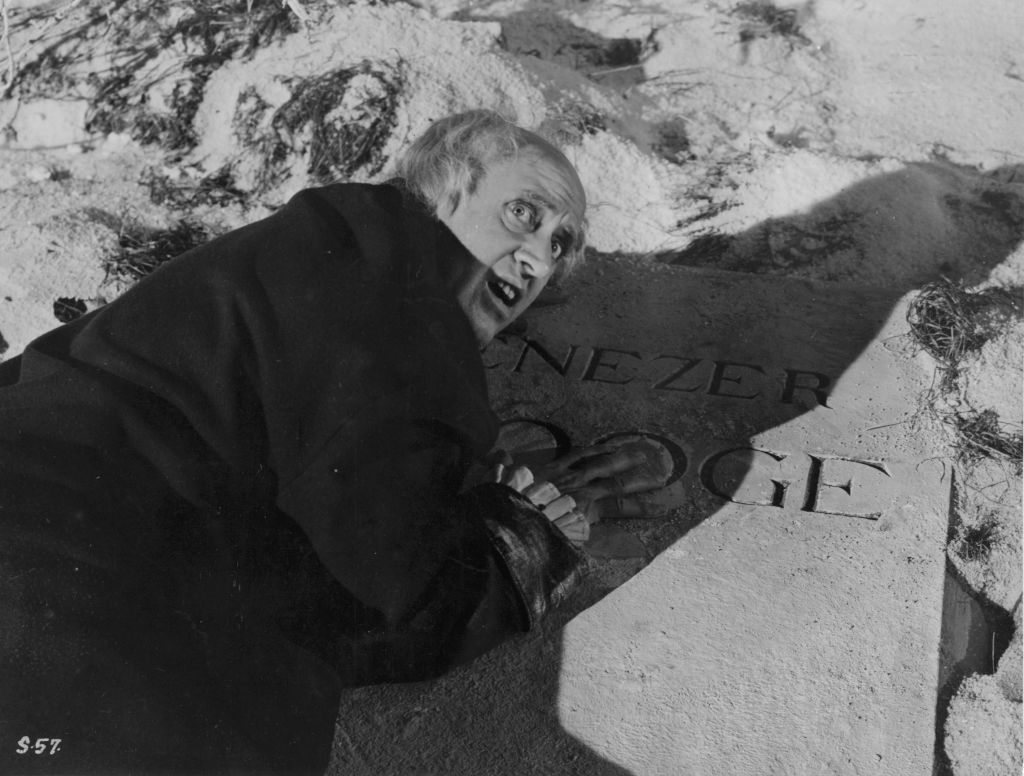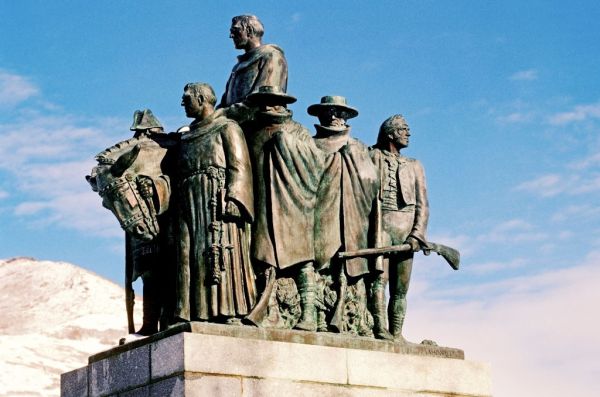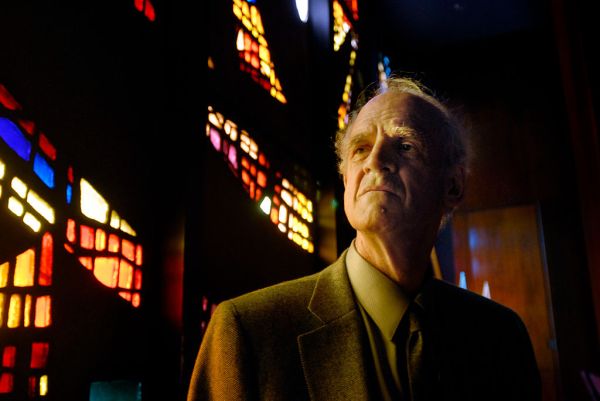On Christmas, time does not exist in its normal rhythms.
Perhaps you’ve pulled your mother’s favorite dessert out of the oven, put a specific ornament on your tree, or participated in a shared family activity. The moment suddenly runs and melts into past moments. Time and space smear. You are no longer an isolated individual in an isolated moment in time. Those who celebrate the holiday often feel a sense of kinship with the past. It’s there, so close, breathing down our necks, pulling at our minds and hearts. Sometimes, it is sickeningly proximate: Trauma or hardship can seep into the warmth of the day. The grief of a lost loved one might feel especially sharp and painful. And yet for others, this sense of haunted time can offer a warmth and joy that sets Christmas apart from other holidays. With a singular smell, taste, touch, or sound, everything changes.
In his excellent book Reading the Times, the literary scholar Jeffrey Bilbro defines this phenomenon more fully. He explains theologian Paul Griffiths’ definitions of time as metronomic and systolic, relating each to the two Greek concepts of time: chronos and kairos. Metronomic (or chronos) time is “linear and sequential,” encapsulating our society’s most common conception of time. Metronomic time is progressive. It continuously builds an ever-new reality, without specific reference to the recent or ancient past.
Systolic (or kairos) time, in contrast, could be understood as “ruched, pleated, [or] tensed” time. Systolic time “is contracted” around specific events, rhythms, and seasons. Past, present, and future are folded around each other, bound around those events or persons that “lie at the heart of time.” No single moment is necessarily free of hauntedness. And while we can all feel this sense of reality at given moments, it seems as if the presence of specific liturgical “markers” draws this reality into sharp focus.
In the Bible, these seasonal markers could be understood as unique “ebenezers” (ebhen hā-ʽezer) the Hebrew term meaning “stone of help.” The Old Testament prophet Samuel set up a great stone before the people, one that served as a commemoration of God’s help and assistance, and “named it Ebenezer, saying, ‘Thus far the LORD has helped us.’” This stone of remembrance, this ebenezer, would remain as a sign and promise long after the prophet’s death. For generations to come, the “stone of help” defied time and death. Time curved and threaded around it, drawing the past into a tangible, touchable present. The stone became a beautiful reminder of kairos time, showing God’s people both their past and their present, their calling and their creatureliness.
We don’t use the term much anymore, but we cannot grow without both hopeful and painful ebenezers. Their presence in time makes us who we are; seeking to forget them, to bury them in the monotony of metronomic time, does the opposite.
Attending an Anglican church and participating in the liturgical church year have made these connections especially clear to me. There’s a spooky, deep sense of time, in which our chronological conceptions of advancement and newness fade into the background. This sense of time seeps into our lives when, rather than focusing simply on the next thing on our agendas, we instead consider the liturgies—the rituals, forms, or habits—that shape each season of life. In embracing and celebrating those liturgies, we find the kairos within the chronos. Our lives touch a deeper nerve. We sense a pattern beneath the chaos of the quotidian.
I think these conceptions of time and of ebenezers help to explain the significance of Charles Dickens’ A Christmas Carol. In many ways, it is the quintessential piece of Christmas literature that we come back to, time and time again. It’s a remarkable text for many reasons, including its concern with this idea of kairos time, of remembrance and connectedness.
In the novel, we meet the dour, sour Ebenezer Scrooge. Dickens describes the protagonist as “Hard and sharp as flint, from which no steel had ever struck out generous fire; secret, and self-contained, and solitary as an oyster.” His last name is almost a form of onomatopoeia, rolling off the tongue with a sinister and grouchy cadence. Over the decades, “Scrooge” has become synonymous with miserliness and greed. But it is really his first name—Ebenezer—that should give us pause.
It’s rather ironic that Dickens’ first description of Scrooge emphasizes his stony demeanor (“hard as flint”). This Ebenezer is a stone without help, and without meaning, at the beginning of A Christmas Carol. But this hard-hearted individual is himself helped by three spirits who travel with him to moments in his past—moments that then speak to his present and his future. Ebenezers keep illuminating the text, drawing Scrooge into a different reality.
In some moments of haunting, Scrooge’s memories are sweet. When the Ghost of Christmas Past draws him into his childhood, Scrooge experiences “a thousand thoughts, and hopes, and joys, and cares long, long forgotten!” A visit to Fezziwig’s workshop is comforting and warm, reminding Scrooge of past hopes and joys. Indeed, Fezziwig is the ultimate picture of what an ebenezer-minded individual ought to be: joyous, charitable, and thoughtful. More than any other character in A Christmas Carol, Fezziwig transforms Scrooge’s heart and mind. Scrooge remarks of his old employer:
He has the power to render us happy or unhappy to make our service light or burdensome; a pleasure or a toil. Say that his power lies in words and looks; in things so slight and insignificant that it is impossible to add and count ’em up: what then? The happiness he gives, is quite as great as if it cost a fortune.
At other moments, however, Scrooge’s ebenezers are harsh and sinister. Jacob Marley’s miserly actions become a literal chain, “some fifty or sixty fathoms of iron cable,” that bind and drag him into sorrowful remembrance. Scrooge mourns over past hurts in a way he could not at the time. He sees himself as a forlorn and lonely boy, and “wept to see his poor forgotten self as he used to be.” Tiny Tim’s crutch haunts the text, showing Scrooge the woeful doom of his current life. And eventually, with the Ghost of Christmas Yet to Come, Scrooge appears before his own “Ebenezer”: a neglected tombstone that bears his name. This tombstone is a literal stone of help, Mark D. Roberts has written for Patheos. It calls Scrooge out of his brokenness and bleakness. It moves him from senseless chronos into hopeful kairos.
Scrooge wakes on Christmas morning out of his own death, out of the darkness of his old habits, into resurrection. “I don’t know anything,” he says. “I’m quite a baby. Never mind. I don’t care. I’d rather be a baby.” In his final transformation, his embrace of the ebenezers he’s seen, Scrooge becomes himself a “stone of help” for others, an individual who stands for beauty and truth and goodness, just as Fezziwig once did. As he says on Christmas morning, “I will live in the Past, the Present, and the Future!” He cares for the poor. He saves Tiny Tim’s life. And he lives with charity and grace.
Scrooge cannot do so, however, without the tangible reminders of chain and tombstone, crutch and workshop, that he’s received. Each ebenezer that draws him into the past enables him to renew time in the present and the future.
In September 2014, my beautiful grandmother died of cancer. She was my Fezziwig. She still is. She’s a reminder of what Christmas ought to be, what it means to live with grace and love. Every Christmas, we make her cranberry steamed pudding. We pull out her beautiful dishes. And time smears and folds. We cry and smile, we celebrate and we mourn.
It is not easy to live in the past, the present, and the future. Sometimes, it’s easier to just embrace metronomic time; to leave the past behind, to forget rather than to remember.
But to ignore the power of ebenezers, to spurn the folding and “ruching” of time around their weight and significance, is to lose sight of reality. It’s to lose sight of ourselves, and who we might become. We all, like Scrooge, ought to take some time this Christmastide to consider the Ghosts of Christmas Past, Christmas Present, and Christmas Yet to Come. May those ghosts give us courage and conviction in the year ahead.








Please note that we at The Dispatch hold ourselves, our work, and our commenters to a higher standard than other places on the internet. We welcome comments that foster genuine debate or discussion—including comments critical of us or our work—but responses that include ad hominem attacks on fellow Dispatch members or are intended to stoke fear and anger may be moderated.